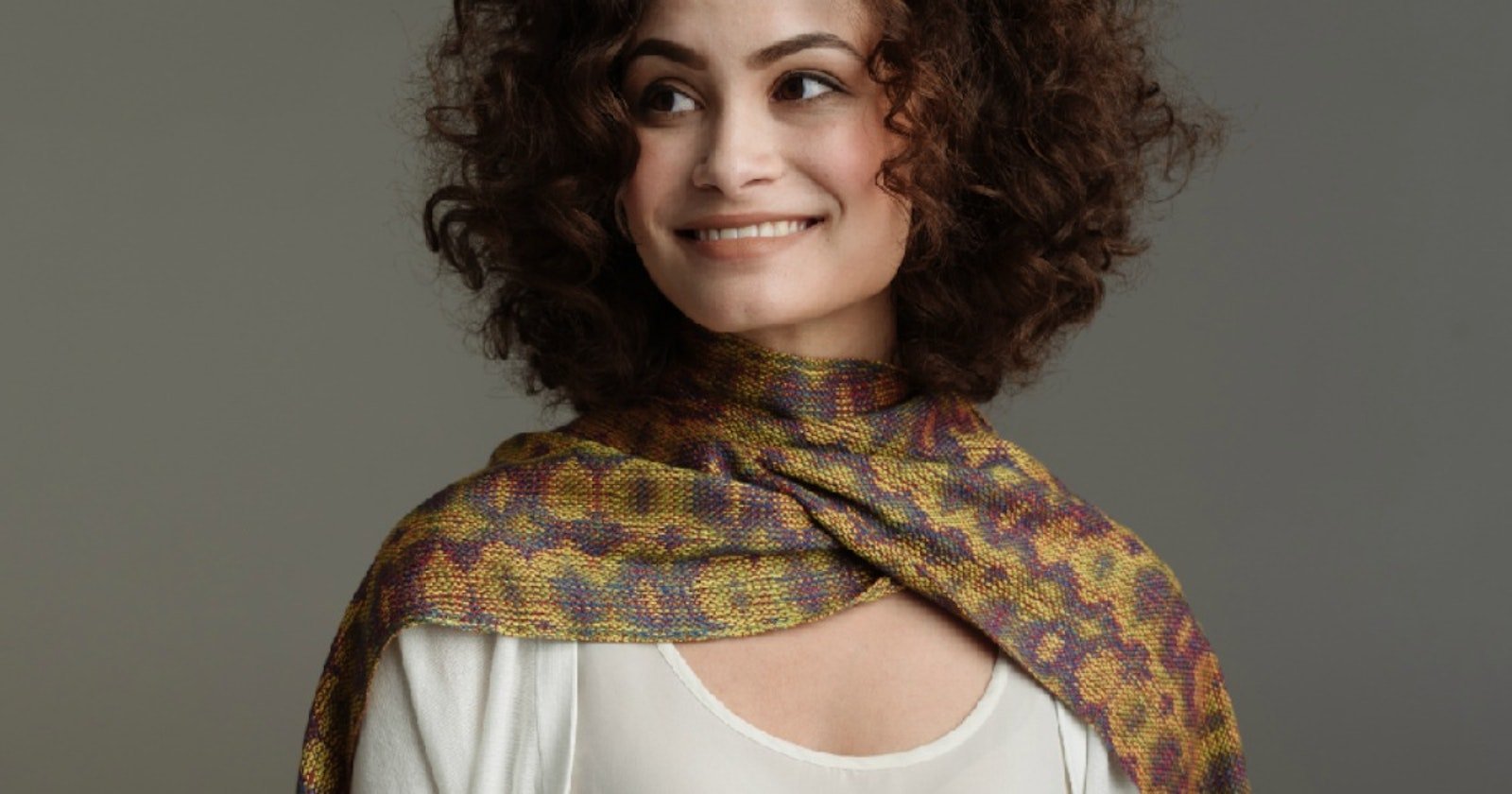If you’re looking for a project that is sure to impress on just 8-shafts and 10 treadles, look no further than Bonnie Inouye’s spectacular Jin Silk Scarf. Woven in turned taqueté in delicious silk, Bonnie’s scarf from Handwoven Loom Theory: Eight and Over Eight Scarf Collection is guaranteed to turn heads. Here’s what Bonnie had to say about her design:
Bonnie Inouye’s complex turned taqueté scarf is woven using just 8 shafts and 10 treadles.
Designer Bonnie Inouye’s Statement
Chinese legend attributes the discovery of silk fiber to the Empress Hsi Ling Shih in about 3000 BCE. According to that legend, a silk cocoon fell into her teacup and began to ravel. Because she was sitting under a mulberry tree, the favored food of Bombyx mori silkworms, she didn’t have to look hard to find the cocoon‘s source, and so began the history of silk.
Turned taqueté, known as jin in ancient China, produces a fabric with clear designs and a smooth surface. The design appears as if by magic. This draft uses 3 colors in the warp, running in parallel lines starting on shafts 1, 3, and 5. The green warp creates color blends with each of the others. Where one warp color shows on the top face of the cloth, the other two work together on the reverse. Where two colors show together on the top face, the third warp color shows on the reverse. The threading design makes a curve that is advanced by 4 shafts for a half-drop, making 4 curves across the 2 repeats of the threading.
I always weave turned taqueté as a warp-emphasis fabric (more warp ends per inch than weft picks per inch) for a strong design and appealing drape in a stable, durable cloth. It is quick to weave but takes some extra time to warp, so I usually warp for multiple scarves. I use a weft that is thinner than the warp yarn (often much thinner) because the design comes from the warp colors. Although thin, the weft still has an impact as it blends with each of the warp colors, so I allow extra warp for sampling. A weft color that is a complement of the warp colors may produce iridescence in the woven cloth.
Silk is a perfect choice for iridescence and drape. Silk scarves are warm in winter and comfortable when the weather is warmer, and they always feel good against the skin.
Because the weft color can shift the appearance of each warp color, I chose hems to finish the ends rather than twisted fringe. With this structure, it is possible to weave two separate layers of pseudo-plain weave in a tubular fashion. Folding the layers inward at the hem and handstitching the edges together creates a striking finish.
Happy Weaving!
Christina
Project at a Glance
PROJECT TYPE: 8-shaft.
STRUCTURE: Turned taqueté.
EQUIPMENT: 8-shaft loom, 11" weaving width; 10-dent reed; 1 shuttle; 2 bobbins.
YARNS: Kiku 20/2 silk (5,000 yd/lb; 1,100 yd/3.5 oz skein; Treenway Silks); Taiyō 30/2 silk (7,500 yd/lb; 1,650 yd/3.5 oz skein; Treenway Silks).


